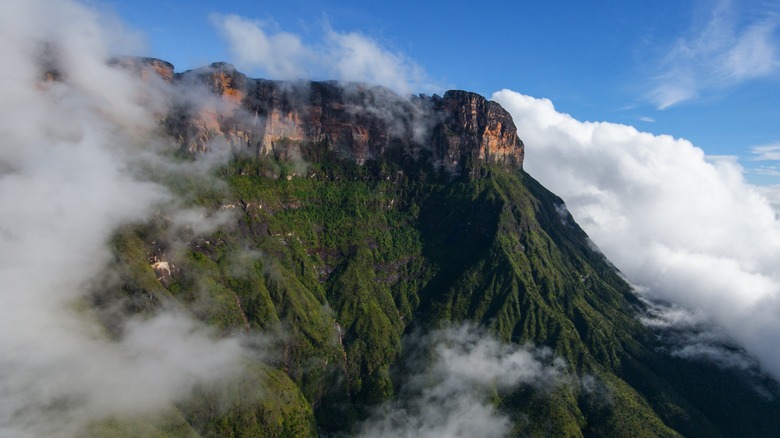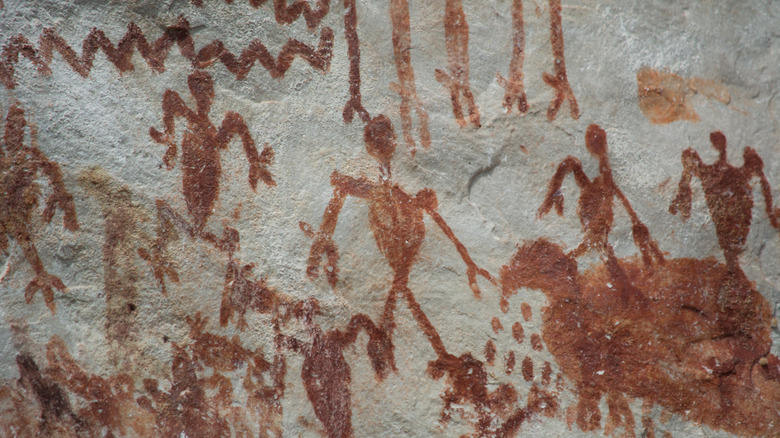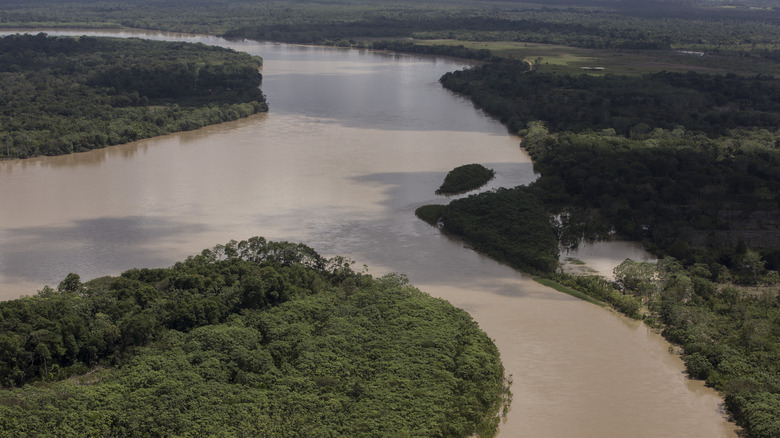South America's Largest National Park Is A Tropical Lost World You Can Only Tour By Air
There is no shortage of exciting destinations you can add to the ultimate bucket list for a vacation to South America. It contains some of the wildest, most uninhabited natural areas on the planet. From the deep jungles of the Amazon to the world-famous Perito Moreno glacier in Argentina, there are many pockets of the continent where few tourists venture.
Situated in Colombia's Amazonian southwest, Chiribiquete National Park is the largest national park in South America and an untamed region of rainforest, rivers, and otherworldly table mountains known as tepui. The park is not just home to an incredible array of biodiversity; it's also an archeological treasure trove with thousands of indigenous rock paintings. Chirbiquete's utter uniqueness and raw splendor became a designated UNESCO World Heritage Site in 2018. It is considered a sacred place by indigenous peoples and is home to uncontacted tribes, so it is off-limits to outsiders (at least on the ground). It is possible to take in the park's grandeur from the air, which is how modern Colombians came across it in the first place.
Catch a glimpse of an untouched world in Chiribiquete National Park
Chiribiquete has been home to indigenous people for thousands of years, but the outside world didn't learn of its existence until close to 40 years ago. While serving as the director of the National Natural Parks of Colombia, the adventurer and anthropologist Carlos Castaño Uribe spotted the rugged tepui formations rising starkly from the jungle greenery while flying over the region in 1986. Captivated by these images, he returned to the area with teams of scientists on over two dozen expeditions, leading him to discover the rock paintings that warranted its UNESCO protection.
The region was given national park status in 1989 and has since been expanded two times. Roughly the size of Denmark, it now stretches over 10.4 million acres of land largely untouched by modern society. Chiribiquete is renowned for its staggering amount of plant life, as well as its fauna, including threatened species such as the giant otter, lowland tapir, giant anteater, common woolly monkey, and jaguar.
The name Chiribiquete translates to "Maloca of the Jaguar;" Maloca are the traditional longhouses inhabited by people indigenous to the Amazon basin. Evidence of native presence is seen in over 75,000 painted figures on the walls of some 60 rock shelters. Some of these paintings date back to more than 20,000 years ago, making them the oldest evidence of human habitation in all of Latin America.
Seeing Chiribiquete National Park from above
Chiribiquete has long been closed to visitors, due to the lack of roads leading into the park and its sacred status to indigenous people. It's home to up to at least two uncontacted native tribes, and their preservation keeps them protected from outside disease and cultural threats.
However, it is now possible to view this prehistoric emerald world from above. A number of tour operators have been granted licenses to take visitors on guided, chartered flights that pass over the vast expanse of land. These excursions from the tour company Flashpacker Connect take off from the country's capital of Bogotá and take around five hours, with one hour spent over the park. While Colombia has much to offer in terms of natural amazement, its colonial towns are also magical places, as many tourists have yet to discover the breathtaking, white city of Popayán.


